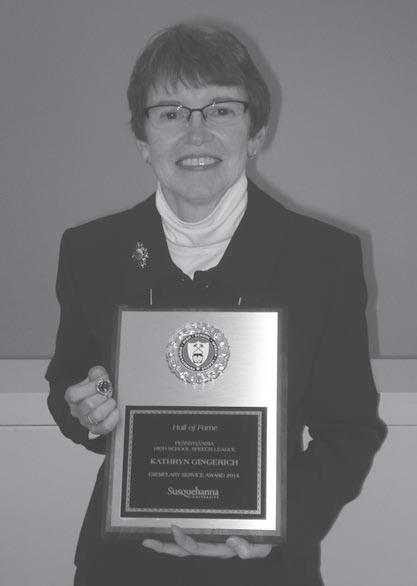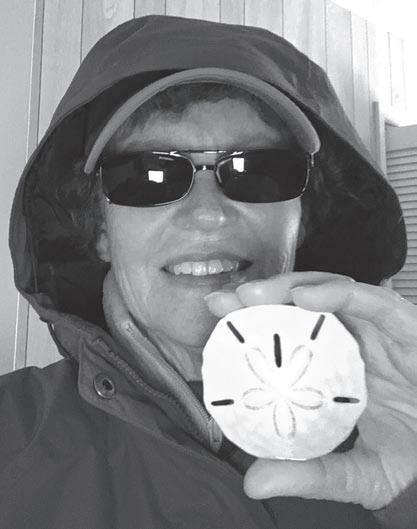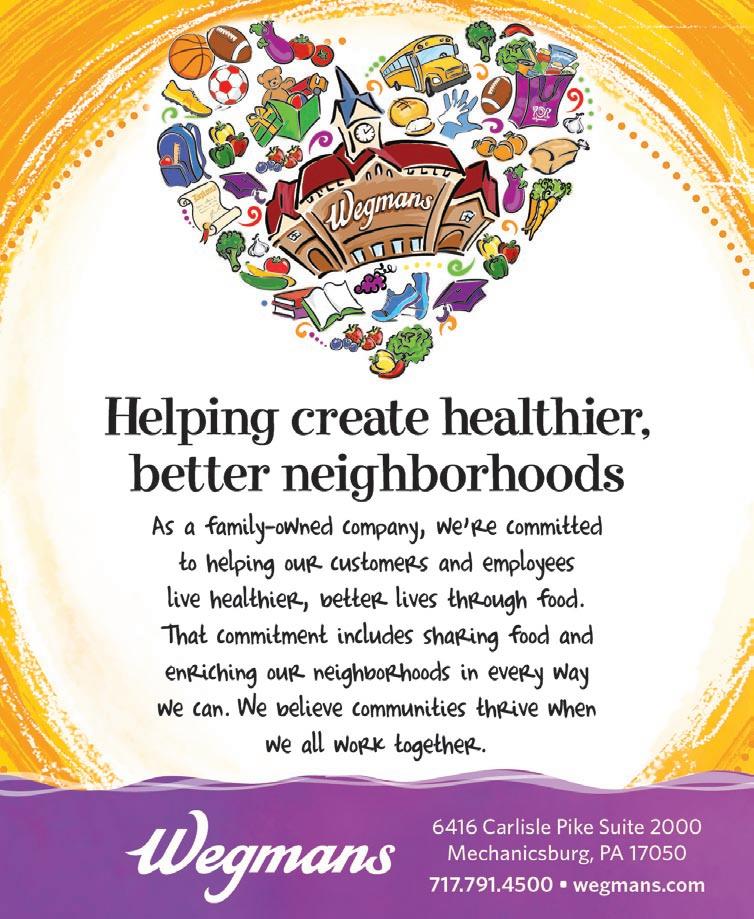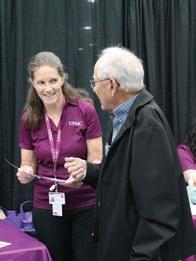






























Dear Savvy Senior,
What are the steps to take to fight against age discrimination in the workplace, and where can I turn to for help if I think I’ve got a case?
– Passed-Over Paul
Dear Paul,
If you believe your age has cost you in the workplace — whether it’s a job, a promotion, or a raise — you have options for fighting back.
Here’s what you should know, along with some steps to take against this illegal workplace activity.
The Age Discrimination in Employment Act (ADEA) is your first defense against age discrimination. This is a federal law that says an employer cannot fire, refuse to hire, or treat you differently from younger employees because of your age.
Some examples of age discrimination include:
• You were fired because your boss wanted to keep younger workers who are paid less.

• You were turned down for a promotion, which went to someone younger hired from outside the company, because the boss says the company “needs new blood.”
• When company layoffs are announced, most of the persons laid off were older, while younger workers with less seniority and less on-the-job experience were kept on.
• Before you were fired, your supervisor made age-related remarks about you.
• You didn’t get hired because the employer wanted a younger-looking person to do the job.
The ADEA protects all workers and job applicants age 40 and over who work for employers that have 20 or more employees — including federal, state, and local governments as well as employment agencies and labor unions.
If your workplace has fewer than 20 employees, you may still be protected under your state’s anti-age discrimination law.
If you think you are a victim of employment age discrimination, you may first want to talk to your supervisor informally or file a formal complaint with your company’s human resources department.
If that doesn’t resolve the problem, you should then file a charge with the Equal Employment Opportunity Commission (eeoc.gov) within 180 days from the date of the alleged violation, but it may be extended to 300 days.
You can do this online, by mail, or in person at your nearest EEOC office, which for central Pennsylvanians is in Philadelphia. Email pdocontact@eeoc.
gov or call (800) 669-4000 or (267) 589-9700. They will help you through the filing process and let you know if you should also file a charge with your state anti-discrimination agency.
If you do file, be prepared to provide the names of potential witnesses and your notes about age-related comments and other episodes.
Once the charge is filed, the EEOC will investigate your complaint and find either reasonable cause to believe that age discrimination has occurred or no cause and no basis for a claim. After the investigation, the EEOC will then send you their findings along with a “notice of right-to-sue,” which gives you permission to file a lawsuit in a court of law.
If you decide to sue, you’ll need to hire a lawyer who specializes in employee discharge suits. To find one, see the National Employment Lawyers Association at nela.org; the Pennsylvania Bar Association at pabar.org/site/for-the-public/finda-lawyer; or the American Bar Association at findlegalhelp.org.
If you lose your job in a group termination or layoff, you should consider joining forces with other colleagues. There are advantages to proceeding as a group, including sharing costs of the litigation and strengthening your negotiating position.
Another option you may want to consider is mediation, which is a fair and efficient way to help you resolve your employment disputes and reach an agreement.
The EEOC offers mediation at no cost if your current or former employer agrees to participate. At mediation, you show up with your evidence, your employer presents theirs, and the mediator makes a determination within a day or less.
Send your questions to: Savvy Senior, P.O. Box 5443, Norman, OK 73070, or visit savvysenior.org. Jim Miller is a contributor to the NBC Today show and author of The Savvy Senior book.






Corpor AtE oFFiCE
P.O. Box 8049, Lancaster, PA 17604
Phone (717) 285-1350 (610) 675-6240
Fax (717) 285-1360
Email address: info@onlinepub.com
Website address: www.onlinepub.com
prESiDENt AND pUBLiSHEr
Donna K. Anderson
EDitoriAL
Vice president and Managing Editor
Christianne Rupp Editor, 50plus publications
Megan Joyce
Art DEpArtMENt project Coordinator
Lauren Phillips
BUSiNESS DEVELopMENt Senior Marketing Consultants
Joshua Binkley
Angie Willis Events Manager
Kimberly Shaffer
ADMiNiStr AtioN Business Manager
Elizabeth Duvall Member of


Awards

On-Line
Views expressed in opinion stories, contributions, articles and letters are not necessarily the views of the publisher. The appearance of advertisements for products or services does not constitute an endorsement of the particular product or service. The publisher will not be responsible for mistakes in advertisements unless notified within five days of publication. On-Line Publishers, Inc. reserves the right to revise or reject any and all advertising. No part of this publication may be reproduced or reprinted without permission of On-Line Publishers, Inc.
We will not knowingly publish any advertisement or information not in compliance with the Federal Fair Housing Act, Pennsylvania State laws or other local laws.
“How can you care about something you don’t know about? How can you want to protect and defend something you have not experienced? Why recycle and use your canvas bags at the store? Why plant pollinator plants in your yard?” retired teacher Kathy Gingerich asks.
To help everyone answer those very questions, and many more, Gingerich is a firm believer in the importance of educating everyone about the natural wonders all around them — and just how important it is for us all to protect those wonders.
Gingerich, who enjoys life with her husband on a 23acre wooded lot in Dover, Pennsylvania, spent her childhood in Williamsport in a family cabin on Kettle Creek in Clinton County.
“We spent lots of time playing in the creek and in the surrounding woods,” she said. “I grew up with parents and grandparents who loved being outside. My maternal grandfather worked with Gov. Pinchot on Pennsylvania’s environmental issues.”
These days, besides enjoying time with her daughter, grandchildren, and great-grandson, Gingerich continues to enjoy the outdoors by fishing, downhill skiing, deer hunting, and spending time in the woods.
Before her retirement, this award-winning teacher spent 38 years in the classroom, 28 of those teaching high school science.
Whitetail Environmental Center at Pinchot State Park for the West Shore School District.”
The program at the environmental center that she helped manage allowed all of the students in the 10 elementary schools in her district to visit the environmental center at least twice a year.


“Most of that time was at Red Land High School,” she said. “I taught earth science, astronomy, and geology. For 10 years, I was one of two teachers who ran the
“We were awarded top honors for our environmental program by the state the year before the program was cut by the school district,” she said.
As a teacher, Gingerich had a unique approach to her earth science curriculum that kept her students very interested in the subject: She focused on natural disasters.
“Earthquakes, volcanoes, hurricanes, floods, and glaciers or icebergs,” she said. “My ninth grade ES classes also went on a trip to Indian Echo Caverns and a fossil dig every spring.”
Her astronomy classes had unique learning opportunities as well, joining her at the Astronomical Society of Harrisburg’s observatory each month “to look though the big telescopes,” she said. “There was also weekly measuring of the position of the sun with the compasses to chart the seasonal movement.”
When working with students at the environmental center, it was all hands-on, Gingerich said.
“Kindergarten through first grade had fall and spring walks. Second and third grade involved collections. Fourth grade focused on the watershed and the path of water, and fifth grade focused on stream studies.”
She also ran the school district’s portable planetarium, StarLab, while she was at the center, something her astronomy classes enjoyed taking advantage of.
In the early 1990s, Gingerich and her husband, also a teacher, both completed a threeweek onsite training program offered by the National Geographic Society to become teacher consultants.
“Their goal was to take the idea of geography away from memorizing states and capitals to a five-themed approach,” she said.


Bees, and Butterflies committee for the Garden Club of York, she added speaking programs to her repertoire, which included three different presentations at the general meetings each year.
“I try to choose topics that are not general knowledge, even to me, and do a deep dive,” she said.
“Our mission was to present workshops to teacher groups throughout the state.”
They were honored to be selected as the two teachers from Pennsylvania to participate in the NGS national workshop with the theme of “Workshop on Wilderness,” based in Oregon.
“This was three weeks of intense training by the experts in each area we visited, which included the Columbia River Gorge, Mount Hood, Mount St. Helens, and the temperate rainforest of the Northwest,” she said.
After completing that program, Gingerich said that “our obligation was to put on three teacher workshops in that then-coming year — we put on over 70.”
Following that summer program, Gingerich spent a month in Oxford, England, on an NGS grant, where she studied British geography.

in a two-decade study, Gingerich has photographed and logged the weight, measurements, and sex of all box turtles found on her property, with more than 50 catalogued so far.
Around that time, she had also received a grant from the National Audubon Society to attend a camp in Wyoming, “where the interconnectedness of all aspects of the area — water land, climate, weather, plants, and animals — was the emphasis,” she said.
Once she retired, Gingerich took some of her favorite lessons as a teacher, adapted them for mostly elementary classrooms, and offered them to the teachers in her former district. These included “Owls and their Pellets,” “Fun with Water,” “Minerals,” “Rock Cycle,” and moon, planets, and planetarium programs in StarLab.
When this busy environmental enthusiast became the chair of the Birds,
Each program involves up to 40 hours of preparation. Some of her program titles include “Birds of a Feather,” “Migration – Should I Stay or Should I Go?”, and “Do You See What I See?” which focuses on pollinator vision. She also presents to other groups, ranging from children at a library in Canada to various Audubon societies.
“I adapt the program depending on what the requester gives me for a timeframe and for the audience,” she said.
Gingerich recalls that when she was working at the environmental center at Pinchot Park, she was “always amazed and crushed at how few students had been to the park or even for a walk in the forest,” she said.
It can be difficult to care about something that you have never truly experienced, which is why she’s so passionate about environmental education.
“With my earth science, astronomy, and environmental background, I have a detailed view of just how incredible, balanced, renewing, and vulnerable the environment of the Earth is.”
When she’s not teaching, or researching, or presenting a program, Gingerich said she loves walking her 23 acres, “pulling out/cutting invasive species, cutting vines off trees and marveling at seeing a walking stick, a praying mantis, a feather, a skull, a bird egg, a snake, a deer, or hearing an owl or woodpecker.”
She has a great passion for the great outdoors, and encourages everyone to simply take a walk outside.
“Parks are free for the walking,” she said. “Take a small section and look at the variety of plants, insects, and birds living there — and be amazed!”
Anyone interested in developing healthy habits and increasing stamina can take part in a free Penn State Extension virtual walking program called “Everybody Walk Across Pennsylvania.”
The statewide program will take place April 1 through May 27; it aims to harness social support to achieve healthy lifestyle goals.
Participants may walk individually or with family, friends, coworkers, or even their dogs in teams of up to five. Each individual or team member will aim to walk or exercise an average of 10 miles a week for eight weeks.

Participants can walk at a time and place convenient for them, such as a park, neighborhood, or yard. Weekly emails sent to participants will include motivators to keep walking and strategies for eating healthily.
“Everybody Walk Across Pennsylvania” is not competitive and is intended to help participants improve their own physical activity levels.
Participation is free, but the deadline for registration is March 29. More information is available on the Penn State Extension website at extension.psu.edu/everybodywalk-across-pa or by calling (877) 345-0691.
While people may think about heart disease and kidney disease as two different health problems, there are many links between them.
Kidney disease affects roughly 1 in 7 (15%) American adults, according to the American Kidney Fund.
Having chronic kidney disease (CKD) means you’re more likely to get heart disease. The reverse is also true: Heart disease can cause CKD. In fact, heart disease is the leading cause of death among people on dialysis, which is a life-saving treatment for people in kidney failure.
To learn more about the link between kidney disease and your heart, consider these facts from the American Kidney Fund:

Your heart and kidneys rely on each other to function well. When you have kidney disease, your heart must pump harder to get blood to your kidneys, which can cause stress on your heart. This extra stress can eventually lead to heart disease.
Additionally, if your kidneys are damaged, they can’t filter blood as well as they should, leaving extra fluid and waste in your blood, which can damage other organs — including your heart.

84% of Baby Boomers have taken action as a result of seeing an ad in a print newspaper in the past 30 days.
When you have heart disease, your heart cannot pump blood through your body as well as it should. Heart disease includes heart or blood vessel problems such as coronary artery disease, blood clots, heart attacks, or problems with your heart’s muscles, valves, or heartbeat.
Your heart makes up for this by holding onto more salt and water, putting pressure on your veins. This extra pressure on your veins can ultimately damage your kidneys, leading to kidney disease.
Kidneys help regulate blood pressure and create red blood cells. In addition to filtering blood, healthy kidneys also produce a hormone that helps regulate your blood pressure.
The kidneys also produce erythropoietin, which signals the body to make more red blood cells to carry oxygen through your body. When the kidneys can’t make erythropoietin, it can lead to anemia and heart problems.
Potassium plays a major role in kidney and heart health. Potassium controls muscle contractions, including those in the heart. Unbalanced potassium levels can lead to risk of heart disease or heart failure — the most fatal heart issues associated with kidney disease.
Patients with kidney disease, including those not yet on dialysis, can have issues with potassium. The loss of kidney function can result in the inability to filter potassium.
When this happens, it causes extra potassium in the body, a condition known as hyperkalemia, or high potassium. Hyperkalemia often does not cause symptoms until heart health has already worsened and can lead to a heart attack if not diagnosed and treated.
Many patients discover they have high potassium due to a minor heart issue, but the chronic condition must be treated continuously through medicines called potassium binders. The medicine works by sticking to the potassium in your body, which is then removed through feces. This prevents some of it from being taken into your blood and building up.
Prevention of both heart and kidney disease starts with preventing and managing the conditions that cause them. Keeping diabetes, high blood pressure, and anemia under control can help prevent them from getting to the point of causing kidney or heart disease.
When found early, you can manage the conditions through lifestyle changes, such as:
• Following a kidney-friendly and heart-healthy eating plan
• Being active daily
• Avoiding use of tobacco products
• Lowering stress levels
For more information on the kidney-heart connection, especially potassium in the body, talk to your doctor and visit kidneyfund.org/beyondbanana s, an education campaign from the American Kidney Fund and AstraZeneca. (Family Features)








WORD SEARCH



Across
1. Catch, as flies
5. Jalopy
9. Superboy’s girlfriend
13. Sushi staple
14. Blacksmith’s block
16. Yoked beasts
17. Operatic prince
18. Angler’s gear
19. Gaul
20. Spheres
22. French general
24. Feels punk
26. Threads
1. Recipe direction
2. Massive
3. Dwarf buffalo
4. Lei, e.g.
5. Annoyance
6. Compass pt.
7. Ardent
8. Longed
9. Migratory grasshoppers
10. Olympics jump
11. 1994 Jodie Foster film
12. A chip, maybe
15. Chickpeas
21. Go for the gold
27. Easter wear
30. Sacred songs
34. Multitude
35. Foil’s kin
37. Hindu wrap
38. ___ vapeur (steamed)
39. ___ Tower
40. Salon supply
41. Oodles
43. Irish novelist O’Brien
44. Cay
46. Nagana carrier
48. Positions
23. Brouhaha
25. Mount with spirit
27. Philippine knives
28. Emulate Cicero
29. Reaches over
31. Golf score
32. Acacias and balatas
33. Delta deposit
34. Sentry’s cry
36. Muse of poetry
39. Playground items
42. Alien
44. Division word
45. Bane
50. Friends role
52. Camp Swampy dog
53. Japanese port
57. Colorful bird
61. Computer symbol
62. Chock
64. Choir attire
65. Double-decker checker
66. Farm towers
67. Misses
68. Perimeter
69. In order
70. Old flames
47. Letters of distress
49. Bear witness
51. Coil of yarn
53. Winged goddess
54. Battery fluid
55. Percussion instrument
56. Eric of Monty Python fame
58. Sweet-talk
59. Qualified
60. 1987 Costner role
63. India’s smallest state

I may be your favorite pharmacist, but I have a silly sense of humor, so today we’ll dive into the world of chewing gum and how it might be helpful for concentration. Weird, I know!
We all know how easily our wandering minds get the best of us, and this leads to slowed-down productivity. It doesn’t seem plausible to me that a simple piece of gum might just be an aid for brainpower.
But we will delve into all of this as we discuss the four most interesting concentration benefits of chewing gum:
1. Increased blood flow. Chewing gum has been found to slightly increase circulation within the brain, at least according to the Parkinson’s Resource Organization: “Some studies have reported that chewing gum increases blood flow to the brain by 25%–40%.”

So maybe chewing gum can deliver a small but extra dose of oxygen and nutrients! This tiny surge in blood flow can result in improved cognitive performance, enhanced attention span, and increased mental alertness … at least for a few minutes.
Studies suggest that gum chewing can also stimulate the release of dopamine, a brain chemical that plays a significant role in our ability to focus. So, it’s not just a mere act of mastication: It’s a neurologically engaging process that enhances cognitive function.
2. Improved multitasking. Raise your hand if you’ve ever felt overwhelmed by a never-ending to-do list. I’m with you! Now, I know what you’re thinking
because I’m thinking it too: How can gum, which requires some attention to chew, actually improve concentration?
Experts say that chewing gum keeps your jaw busy, and as such it may help you push through tedious tasks with greater ease. It seems to act as a motivator, but I’m not exactly sure how. Perhaps it’s that dopamine!
3. Lowered salivary cortisol. Let’s face it: Life can get a bit stressful at times. Juggling all the aspects of life can leave one feeling frazzled, especially in this day and age of nonstop information and social media.
Chewing gum can lower cortisol levels, at least in the brain. To be fair, not all the study conclusions agree on this subject matter. We do know that cortisol can make one feel anxious.
There was an MRI study, too, that concluded: “… gum chewing relieves stress by attenuating the sensory processing of external stressors and by inhibiting the propagation of stress-related information in the brain stress network.”
Chewing gum for a few minutes to boost concentration might just be the magical tool that helps you get through that pile of mail, write that blog, or build that graphic!
So go ahead — indulge in a stick or two of your favorite gum. I’m not judging anybody.
This information is not intended to diagnose, prevent, or treat your disease. For more information about the author, visit suzycohen.com.
The AARP Tax-Aide program will offer free one-on-one counseling as well as assistance on the telephone and internet to help individuals prepare basic tax forms, including the 1040, 1040A, 1040EZ, and other standard documents.
The following are locations in your area. Please call for an appointment or visit aarp.org/money/ taxaide for more information.
Big Spring Senior Center
91 Doubling Gap Road, Newville
Fridays, 9 a.m. to 2:30 p.m. (717) 776-4478
Branch Creek Place
115 N. Fayette St., Shippensburg
Thursdays, 9 a.m. to 2:30 p.m. (717) 300-3563

Camp Hill United Methodist Church
417 S. 22nd St., Camp Hill
Thursdays, 8:30 a.m. to 1 p.m. (223) 251-6907
Carlisle Baptist Church
701 Walnut Bottom Road, Carlisle
Mondays and Thursdays, 9 a.m. to 2:30 p.m. (717) 601-1844
East Pennsboro Community Center 98 S. Enola Drive, Enola
Tuesdays, 8:30 a.m. to 1 p.m. (717) 732-3915
Trinity Lutheran Church 2000 Chestnut St., Camp Hill
Mondays and Fridays, 8:30 a.m. to 1 p.m. (717) 732-3915
Wesley United Methodist Church 203 S. Filbert St., Mechanicsburg
Mondays, 8:30 a.m. to 1:30 p.m.
Tuesdays and Wednesdays, 8:30 a.m. to 1 p.m. (717) 591-5581

There is no greater, more thrilling, or more inspiring natural happening in the Lower 48 than 600,000 northbound sandhill cranes gathering each evening for a few weeks on the Platte River in south-central Nebraska.
From just before sunset into the gathering darkness every day from midMarch into April, the sky, mudflats, and shallow channels in the broad Platte swarm with cranes.
They will spend each night on flats and in the shallows, while waiting for warmer weather to catch up to their annual urge to continue north to their nesting grounds in the western United States, and much of Canada and Alaska.
The migrating cranes spent the winter in parts of Texas, New Mexico, Arizona, California, and central Mexico. Now those cranes spend each day consuming corn kernels, and other seeds and edibles, in fields on the Nebraska prairie but returning to the comparative safety of the Platte each evening.

huge, feathered raindrops from swirling, feathered clouds. Those overwhelming hordes of 4-foot-tall, noisy birds are thrilling to experience.
And still more cranes come from distant fields and land on flats and shallows of the Platte, as darkness settles upon them, the river, and the surrounding prairie. And there they will spend the night in their many thousands.
By the middle of April, the sandhill cranes will be going farther north to raise one or two young per pair. Those youngsters will consume invertebrates.
See their spectacular returning online via the live crane cam at National Audubon’s Society’s Rowe Sanctuary (explore.org/livecams/nationalaudubon-society/crane-camera).
The first returning flocks of sandhill cranes are dark scribbles in every direction in the distant sky. But those fast-moving smudges in the sky soon become lines, V’s, and bunches of croaking cranes coming ever closer to the Platte.
As those first flocks swiftly circle over the river and create a neardeafening, but wonderful, constant din of voices, more dark scribbles are seen approaching rapidly from the distance.
As beautiful sunsets fade, wave upon noisy wave of darkly silhouetted cranes continue to approach the Platte, circle it a few times, and gracefully parachute down into the wind toward the river’s mudflats and shallow channels.
Now cranes crowd the skies and flutter down to flats and shallows like





Q. When seniors gather, it doesn’t seem to take long before we get to our aches and pains. You must get more than your share of that.
My friend, Pete, has instituted a colonoscopy rule. He insists that, if a bunch of us geezers are talking about aches, maladies, and visits to the doctors, everyone has to change the subject as soon as someone uses the word “colonoscopy.”
Usually we switch to grandchildren, which is a lot more fun.
But, while we are on the subject of colons … Colorectal cancer — cancer of the colon or rectum — is the second leading cause of death from cancer in the United States. Early detection of colon cancer is especially important because, if

it is found in its early stages, it can be cured nine out of 10 times.
Who’s at risk? The chances of getting it increase with age. But other risk factors include polyps, your history, diet, and whether you’ve had ulcerative colitis.
Polyps are benign growths on the inner wall of the colon and rectum. Not all polyps become cancerous, but nearly all colon cancers start as polyps.
Colorectal cancer seems to run in families. And, someone who has already had colorectal cancer may develop this disease a second time. So greater vigilance is a good idea if you or your relatives have had it.




People with obesity are at increased risk for many chronic health problems. These include Type 2 diabetes and heart disease. Obesity also increases the risk of many common cancers, including colorectal cancer.
Doctors often prescribe medications for people with Type 2 diabetes, such as metformin, insulin, and other drugs that help manage blood glucose (blood sugar) levels to reduce long-term complications of diabetes.
Over the last two decades, a class of antidiabetic drugs called GLP-1 receptor agonists (GLP-1RAs) has become available for use by people with Type 2 diabetes.

These drugs — which include Ozempic, Trulicity, Wegovy, and Zepbound — not only help control blood glucose, but can also promote weight loss. They reduce appetite both by their impact on the brain and by slowing movement of food through the digestive tract.
Researchers have wondered if these drugs could reduce the risk of other diseases in people with Type 2 diabetes.
In a new study, funded in part by NIH, a research team led by Dr. Rong Xu and Dr. Nathan Berger from Case Western Reserve University and the Case Comprehensive Cancer Center looked at this question for colorectal cancer.
The researchers examined the medical records of more than 1.2 million people with Type 2 diabetes who were prescribed antidiabetic medications between 2005 and 2019. The team identified newly diagnosed colorectal cancer cases over a follow-up period of up to 15 years.
They then compared the risk of developing colorectal cancer among people who were taking seven different types of antidiabetic drugs.
To compare the drugs, the team matched people between groups by known risk factors for colorectal cancer, other preexisting medical conditions, age, sex,
CoLoNS from facing page
This form of cancer is more likely among people on a diet high in fat, protein, calories, alcohol, and both red and white meat. Low-fat, high-fiber diets seem better for the colon.
Ulcerative colitis is a condition in which there is a chronic break in the lining of the colon. Having this condition increases a person’s chance of developing colorectal cancer.
The following are some symptoms of colorectal cancer: blood in the stool, diarrhea, constipation, stools that are narrower than usual, frequent gas pains or cramps, unexplained weight loss, unrelieved fatigue, and vomiting.
Go to your doctor if you have symptoms. The medical profession has many detection tools. These include:
• A test to check for hidden blood in the stool
• A sigmoidoscope, a lighted instrument for examining the rectum and lower colon
race, and socioeconomic status. Thousands of such matches were made between each of the drugs. The results were published on Dec. 7, 2023, in JAMA Oncology.
The team found that, overall, people with Type 2 diabetes who took GLP-1RAs had a lower risk of developing colorectal cancer than those taking the other medications. Those taking GLP-1RAs had a 44% lower risk of developing colorectal cancer than those who took insulin. They had a 25% lower risk than those who took metformin.
This reduced risk was seen whether or not people had obesity or overweight. Among people with excess weight, GLP-1RA users had an even stronger reduction in colorectal cancer risk. This group had a 50% lower risk of developing colorectal cancer than those who took insulin and a 42% lower risk than those who took metformin.
A smaller but significant reduction in colorectal cancer risk was also seen with the use of GLP-1RAs compared to other antidiabetic drugs for people with obesity or overweight.
“[This] research is critically important for reducing incidence of colorectal cancer in patients with diabetes, with or without overweight and obesity,” Berger says.
These findings suggest that GLP-1RAs could be protective against colorectal cancer in people who have Type 2 diabetes, regardless of weight.
More research is needed to confirm these observations, to determine whether GLP-1RAs can reduce the risk of other types of cancer associated with obesity, and to understand their mechanisms of action.
Source: National Institutes of Health
• A colonoscope, a lighted instrument to examine the rectum and entire colon
• A barium enema with a series of X-rays of the colon and rectum
• A digital rectal exam to feel for abnormal areas
Two recent studies showed that colonoscopy can find many precancerous polyps that sigmoidoscopy misses. Another major advantage of the colonoscopy is that it enables the doctor to remove any polyps found during the procedure. There is a virtual colonoscopy, a minimally invasive procedure. Doctors are able to see the entire colon using 3-D computer graphics from a computerized tomography scan, or CT scan.
Known as CT colonography, this exam is an alternative for patients who are at risk of complications from colonoscopy, such as patients who are frail. If a virtual colonoscopy finds significant polyps, they have to be removed by conventional colonoscopy.
Fred Cicetti is a senior and health writer with more than three decades of experience. The Healthy Geezer is devoted to the health questions of seniors who are wondering what is going on with these bodies of ours.

Did you have a dollhouse as a child? Do your children or grandchildren have one?
Mine was nothing to write home about, but it was special to me. My dad made it out of scrap wood from his garage workshop. It was painted white. Our actual house was gray.
It was a two-level Colonial-style dollhouse; our actual house was a ranch. The dollhouse had six rooms — three up and three down — and a staircase. Our house was smaller and had no staircase.
It had no bathroom, so the dolls had to fend for themselves. Even though my dollhouse was something to aspire to, our house did have a bathroom, thankfully.

the Nostell Doll’s House in England was handcrafted in the 1730s, when dollhouses were not considered toys; rather, they were called “baby houses” and were used to teach girls how to run a household.
In fact, the absence of a bathroom in my dollhouse was not a problem for me when at play, because I was more interested in my dollhouse furnishings and accessories than I was in playing with dolls in imaginary roles of daily life. I liked to move around the china cabinet, place the rocking chair in a bedroom or in the living room, rearrange the kitchen chairs, and so on.
In fact, if I had kept that dollhouse furniture and resold it today, I would
stand to make a very good ROI.
While vintage dollhouse furniture and décor items — everything from miniature four-poster beds to tiny ceramic serving platters — are desirable, I would have been sitting pretty if I had kept all those tiny objects that made my dollhouse a home.
These items, if they are contemporary to a dollhouse, can impact the value of a dollhouse significantly when it comes to the market. If you research auction sales for dollhouses only, compared with auction sales of furnished dollhouses, the values are vastly different. Furnished dollhouses bring more cash.
Today, dollhouses of all types — most of which were much more stylish than my dollhouse — are highly collectible. Acquiring some of the most coveted ones will cost you a pretty penny.
In the antiques and vintage dollhouse market today, handmade dollhouses dating back to the 19th century command the highest prices at auction and online. This golden age of dollhouses, circa late 1800s to the early 1900s,
Planning ahead is simple. The benefits are immense.

When you plan ahead, you can design every detail of your own final tribute and protect your loved ones from unnecessary emotional and financial burdens. When you’re ready to get started, your Dignity Memorial® professionals are here to help.
> Lock in today’s prices��
> Make your final wishes known
> Create a unique, meaningful memorial
> Gain peace of mind for yourself and your loved ones
prompted many collectors to seek out architectural marvels in miniature for their collections.
Examples from the Victorian period until the World War II era stir collectors’ interest in the United States, Canada, and Europe.
More recently manufactured dollhouses, like vintage examples from the 1950s and 1960s to the present day, were made by toy manufacturers and remain hot collectibles. These lithographed tin dollhouses were made by companies like Ohio Art, Marx, and Wolverine. Most were designed like the suburban houses of the era.
Why are we seeing a revival of the collectible dollhouse?
When something hits the age of 100, particularly in the collectibles realm, collector interest piques and market prices rise.
The decade of the 2020s marks the 100th anniversary of the era when British Queen Mary, consort to King George V and grandmother of the late Queen Elizabeth II, was a great dollhouse enthusiast. She had an impressive dollhouse made by the famous British architect Sir Edwin Lutyens from 19211924.



Today, Queen Mary’s dollhouse is in the Royal Collection Trust of Great Britain and is filled with furnishings, lighting, books, tea sets, bedroom sets, etc. Of all the royal collections of art and decorative objects, Queen Mary’s dollhouse is a marvel, and it is one of the objects that attract the attention of tourists from around the globe regularly.
What dollhouses are bringing the most money today from collectors?
You guessed it: Barbie Dreamhouses! Mattel Inc.’s cardboard and plastic Dreamhouses made for Barbie and her friends remain some of the most soughtafter dollhouses on the collectibles market today.
Levittown-style, mid-century modern dollhouses made in the name of Barbie from the 1960s; A-frame dollhouses from the 1970s with Barbie’s convertible parked out front; and circa-1980s and 1990s Barbie McMansions with elevators have seen an increase in value this year after the popularity and marketing frenzy surrounding last summer’s Barbie movie.
Ph.D. antiques appraiser, author, and award-winning media personality Dr. Lori presents antique appraisal events nationwide and appears on Netflix’s King of Collectibles and History channel’s The Curse of Oak Island and Pawn Stars Do America. Visit drloriv. com, watch videos at youtube.com/drloriv, or call (888) 431-1010.




 Doris Montag
Doris Montag
How did early builders ensure the structures they were erecting were plumb vertically and horizontally?
The principle they had observed is that a body of water is always horizontal; thus, a trough or channel filled with water can show horizontality.
When the pyramids were built as far back as 1100 B.C., Egyptians used boards with holes bored in them that were filled with water. If the water slopped over when they laid the board on a surface, they could judge which way the surface pitched.
It is known that by


100 B.C., the Romans used water-filled tanks as primitive levels when building their aqueducts. By studying the water surface mode in the tank, the Romans could determine if the bases were flat or at an angle.
Around the same time, builders also used an A-frame level, on which a plumb line (verticality) was suspended from the vertex of the A. The surface was horizontal if the plumb line bisected the crossbar of the A-frame.
The water level, introduced in the 1600s, was
please see LEVEL on facing page
Think you or someone you know would make an interesting profile story for 50 plus Life?
We are looking for central Pennsylvanians over age 50 who have a unique hobby, passion, or history of volunteer work, or who are a part of an interesting local club.
Ideal story candidates are willing to talk about themselves and to be photographed.


Note: Please get your nominee’s permission before submitting them!
Your name: _______________________________________________________________
Your address: ____________________________________________________________________
Your phone: ________________________________________ Email:_____________________________________________
Nominee’s name (if not self): ____________________________________________________________________________
Nominee’s phone: __________________________________ Email:
Why they would make a great story:



Nominee’s town of residence: ___________________________________________________________________________
mjoyce@onlinepub.com or send via mail to 50plus Life, p.o. Box 8049, Lancaster, pA 17604.

Sunshine on my shoulders makes me happy
Sunshine in my eyes can make me cry
Sunshine on the water looks so lovely
Sunshine almost always makes me high
“I had written the song in a fit of melancholy one dismal late-winter/early spring day in Minnesota — the kind of day that makes every Minnesotan think about going down to Mexico,” John Denver recalled.
“The snow was melting, and it was too cold to go outside and have fun. I was ready for spring. You want to get outdoors again, and you’re waiting for the sun to shine, and you remember how sometimes just the sun itself can make you feel good.”
To Denver, his visualization of a perfect day, one warm and satisfying and wonderful, brought him feelings of contentment — pure joy, actually — that he wanted to share with the world.
The message of his gentle acoustic-guitar tune focused on the virtues of the love of nature and the love of life itself.
Denver had struggled for years before finding international success. His first three RCA Records albums — Rhymes and Reasons, Take Me to Tomorrow, and Whose Garden Was This? — had failed to catch fire.

Then came Poems, Prayers and Promises. Folk-music lovers became fans, cash registers “ka-chinged,” and he rode a rocket to stardom. As time went by in the early 1970s, he found celebrity with an ever-growing audience who appreciated his heartwarming tunes that often dealt with finding pleasure in the simplest things.
The original 1971 version of “Sunshine on My Shoulders” was a long
LEVEL from facing page
made of two glass cylinders connected by a tube.
The hose level, first described in 1629, consisted of a length of hose fitted with an upright glass tube at each end. When the water in each tube was at the same height, the surface was level.
In 1661, a French inventor, Jean de Thévenot, created the spirit level, also called a bubble level. He used a straight, sealed glass tube containing water and an air bubble. A spirit level will indicate how parallel (level) or perpendicular (plumb) a surface is relative to the earth.
In time, the water was replaced by alcohol or other spirits to prevent freezing, thus giving the spirit level its name. Later it became evident that the spirit level’s accuracy could be increased by introducing curvature to its glass tube. Still later, the straight tube was replaced with a slightly bent one to reduce the erratic movement of the bubble.
In 1771, the circular level, using a bubble floating within a circular glass, indicated level in all directions. By the late 1800s, levels were made of wood and aluminum, in addition to cast iron.
album track — it ran over five minutes — on Poems, Prayers and Promises. Denver’s ever-growing fan base had focused on the LP’s breakout hit single of “Take Me Home, Country Roads” and seemingly paid little attention to what would become Denver’s first No. 1 single two years later.
In late 1973, he and RCA Records decided that “Sunshine on My Shoulders” from his first hit album could make a great 45 if redone right. With RCA’s approval, Denver shaved off two minutes of running time on his rerecording, and adding strings and woodwinds made it more “commercial.”
The changes made paid off, as that release became the first of four No. 1 John Denver singles released during the 1970s.
The song received a boost when it was used in a 1973 made-for-TV movie called Sunshine
Denver explained, “It was the true story of Lyn Helton, a courageous lady who chose to live her short life to the fullest, even though she knew she would die of a rare bone cancer in a matter of months. It seems that in the last year of her life, she found some happiness in my music. I was most honored to have my song used as part of that television show.”
If I had a day that I could give you I’d give to you a day just like today If I had a song that I could sing you I’d sing a song to make you feel this way
Randal C. Hill is a rock ’n’ roll historian who lives at the Oregon coast. He may be reached at wryterhill@msn.com.
Today, the spirit level containing alcohol or oil is the standard because it can indicate both plumb and level lines. The vial on both ends allows the user to grab it from either end for a quick level check.
In the mid-1980s, battery-powered electronic levels were introduced. Using a conductive liquid, a sensor and semiconductor chip read whether a surface is level or plumb. The level’s display panel indicates the direction of deviation. When plumb, the level issues a symbol on the display, a flashing light, or an audible signal.
In 1989, a new digital level was introduced that measures degree, percent slope, pitch, plumb, and level.
The simple principle that waters remains horizontal will continue to direct the development of levels long into the future.
Doris Montag is a homespun historian and an exhibit curator who researches and displays historical collections of ordinary things, such as can openers, crochet, toy sewing machines, hand corn planters, powder compacts, egg cartons, and more. Contact or follow her on Facebook, HistoryofOrdinaryThings.

Nadine was excited. She scampered along a haphazard route, pausing now and then to sniff at the ground. Occasionally she began to dig in the dirt, her breath quickening and eyes widening.

But she was not permitted to complete the excavation she had begun. That task was finished by Vanessa, who distracted Nadine with a tasty treat and used a trowel to discover, and uncover, the object of their search.
Nadine is a dog, but she’s far from an ordinary canine. She is trained to find truffles, and I recently accompanied her, and her handler Vanessa Shea, on a hunt for those elusive, rather unattractive fungi that more than make up in value what they may lack in appearance.
This quest took placed at Virginia Truffles, a family-owned-and-operated
the ultimate resource for boomer and senior living and care options.











enterprise in that state, but truffles are grown in orchards that span the country from Maryland, Kentucky, and Tennessee to Idaho, Oregon, and California.
Several species of truffle grow wild in Colorado, embedded at the base of trees in ponderosa pine forests. They serve as food for deer and squirrels, but they’re not the variety that is so prized by humans.
Among good places to find truffles in Pennsylvania are Valley Forge National Historic Park, Moraine State Park, and Michaux State Forest.
My experience began with an introduction to everything truffle delivered around a blazing fire pit by Vanessa; her sister, Olivia; and their mother, Patrice.
My fellow adventurers and I benefitted from our hosts’ encyclopedic knowledge, which included historic facts, truffle tidbits, and recipes for using these highly prized gastronomic gems in a variety of ways.
For example, who knew that truffles were prized at the time of the Egyptian, Greek, and Roman empires? That the medieval Catholic Church largely banned consumption of “the devil’s fruit”? And that they were a favorite food of French Queen Catherine de Medici and King Louis XIV?
Modern truffling is said to have evolved when French farmers observed pigs uprooting a favorite food and then trained the animals for the hunt. However, because pigs love truffles, they often consumed their prize before the farmer could rescue it, so trackers began training dogs, who happily work for canine treats.
The object of the hunt is an edible fungus that grows several inches underground beneath tree branches. Favorite hosts are oak and hazelnut trees.
Upon learning that truffle farmers can wait as long as 10 years after planting their seedlings before they get their first harvest, and that the crop is retrieved during a truncated harvesting time of only a few months, I concluded that raising the subterranean fungus is as much an art as a science and qualifies as a labor of love.
Love between human and dog was evident as I followed Nadine and Vanessa walking rapidly through the orchard, Vanessa repeating the mantra, “Where’s the truffle?” Our trek, which lasted a little over an hour, produced five black truffles.
A post-hunt mini-buffet included carrot soup, deviled eggs, pastrami, and brie cheese, all enhanced with fresh truffle shavings or slices.
While the earthy, pungent odor of the tubers that Nadine unearthed was almost too strong for my nostrils or taste buds, the hints of truffle in the food added a unique dimension that I found easy to enjoy but difficult to describe.
During a post-snack visit to the small onsite laboratory, Patrice explained the truffle-cleaning process, which includes cutting out any small rotted areas.
She described the truffle-grading guidelines that have been adopted by the United Nations and mentioned that some of the tubers that the farm sells to nearby white-tablecloth restaurants are priced at more than $120 an ounce.
“Update: Termination of Your Social Security Number … Contact Us Immediately,” read the officiallooking email from the Social Security Administration.
I was a suspicious senior.
The body of the email was even more ominous.
“Due to suspicious and fraudulent activities, we regret to you that your Social Security Number (SSN) will be terminated within 24 hours.”
Wow!
How could I prevent my SSN from being “terminated within 24 hours”? An official-looking email attachment was titled “SSN-suspension_notice(37).”
“To know more about the case docket please refer to the given attached notice,” the email said.

I looked at the “attached notice” with greater suspicion but did not open it. I suspected the email was not sent by the SSA; I suspected it was fraudulent.
I printed a hard copy of the suspicious email and then emailed it to my member of Congress. I officially requested the member ask the SSA to confirm if they emailed me about the “termination” of my SSN.
Members of Congress have direct contacts at the SSA. They can obtain quick replies, and I wanted a quick reply in the unlikely event my SSN was scheduled to be “terminated.”
I got an email from my member of Congress the next day. It included this welcomed message from the SSA about the suspicious email:
“This is a fraudulent email not from SSA; there are no issues on Mr. Patterson’s
from facing page
She also listed some of the many ways truffles may be used to add flavor to a variety of foods, several of which were demonstrated, and enjoyed, during our snack.
While some cuisine seems like a natural fit — think eggs, soup, mashed potatoes, infusing sauces and dips, and making truffle butter and cream — the possibilities for using truffles to titillate taste buds are virtually endless.

record. I refer his issue to OIG [Office of Inspector General]. You can advise him his email is probably compromised and not to provide any information or personally identifiable information via phone or email.”
According to the U.S. Department of Labor, personally identifiable information (PII) is defined as information that directly identifies an individual — name, address, Social Security number, telephone number, email address, etc.
PII is also information by which an agency can identify specific individuals in conjunction with other data elements (indirect identification), such as a combination of sex, race, birthdate, geographic indicators, and other descriptors.
Additionally, information permitting the physical or online contacting of a specific individual is the same as personally identifiable information. This information can be maintained in either paper, electronic, or other media.
Know what your PII is and never disclose it in emails or to telephone callers, especially emails or calls from unknown sources. Keep your PII private.
In this case of SSN “termination,” it paid for me to be a suspicious senior. You should be suspicious of such emails, too. Do not reply to these emails; they are likely attempts to obtain PII.
Cyber crooks can use your PII to steal your Social Security benefits, other government entitlements, or your financial accounts.
James Patterson is a Washington, D.C.-based writer and speaker.



Having been hooked by the distinctive scent, lore, and taste of this nondescript but delicious taste enhancer, I purchased truffle-infused honey, salt, and pepper to bring home.

I look forward to enjoying them, along with memories of a unique experience that long will linger in my mind — and on my tongue.
Information about truffles, and a list of growers throughout the United States, is available at trufflegrowers. com, the website of the North American Truffle Growers Association.
After gallivanting around the world, Victor Block still retains the travel bug. He believes that travel is the best possible education. A member of the Society of American Travel Writers, Victor loves to explore new destinations and cultures, and his stories about them have won a number of writing awards.
In 1982, Rosaline’s Aunt Polly passed away at age 58 from a rare disease called hereditary ATTR (hATTR) amyloidosis after enduring years of debilitating and progressive symptoms.
Learning the disease was inherited, Rosaline and her family started researching hATTR amyloidosis and eventually traced the disease back to her great-grandmother, Annie, who came from Carrigart, Donegal, a town in northwest Ireland.
Less than a decade after her aunt passed away, Rosaline watched hATTR amyloidosis claim her father, Hugh, after he spent the last 22 months of his life in hospice care.
Rosaline recalls the disease progression she witnessed in her aunt and father as “relentless and merciless” — the same words she used to describe the fear she and her siblings carried, wondering if they, too, would have the same fate.

thought to originate from within a 15mile stretch of coastline in Donegal.
In Ireland, the disease is commonly referred to as “Donegal Amy” and has been identified around the world in areas of high Irish immigration, including the United States.
In 2007, Rosaline decided to undergo genetic testing. She learned that she did, in fact, inherit the T60A variant associated with hATTR amyloidosis and was told it would be highly unlikely that she would ever see a treatment option in her lifetime.
“I was absolutely devastated, in a state of shock and despair. I just wanted to lie down and scream. I had been living with this condition hanging over my head since finding out it was hereditary, and now my worst nightmare had come true. It influenced my decision to not have a family of my own, since I was scared I might pass it down,” Rosaline said.
hATTR Amyloidosis: An Irish Heritage Connection
hATTR amyloidosis is caused by an inherited variant, or change, in the transthyretin (TTR) gene, which causes the TTR protein to take on an abnormal shape and misfold.
This change in shape causes the protein to build up as amyloid deposits throughout parts of the body, including the nerves, heart, and digestive system. These deposits lead to symptoms of the disease.
Inheriting the variant does not necessarily mean that someone will develop hATTR amyloidosis.
Symptoms of hATTR amyloidosis can occur in multiple parts of the body and vary from person to person — even among family members.
Symptoms tend to worsen over time and may include numbness and tingling in the hands or feet, weakness, shortness of breath, diarrhea, dizziness, and unintentional weight loss, although this is not a complete list of symptoms, and people may experience other symptoms as well.
The condition is more prevalent among people of certain ethnicities. The T60A variant — one of more than 120 variants known to be associated with hATTR amyloidosis — is specifically linked to people of Irish descent and
Puzzles shown on page 7.

Several years later, as she was approaching the same age her father was when he first developed symptoms of hATTR amyloidosis, Rosaline decided to sell her house and quit her job to spend time traveling the world, certain that she would soon become debilitated by the disease.
A few years into her travels, Rosaline was watching an English news program and saw that a treatment had been approved for hATTR amyloidosis. For the first time, she had hope.
When Rosaline eventually began to experience symptoms — the feeling of pins and needles in her arms; cold, heavy, and numb hands; and numbness in her feet — she met with her doctor to discuss a management plan.
Today with treatment, Rosaline is able to manage her symptoms and now dedicates her time to advocating on behalf of others living with hATTR amyloidosis.
Because Rosaline knew hATTR amyloidosis ran in her family, she received a confirmed diagnosis early in her disease journey, unlike many who live in the dark for years before receiving a diagnosis.


Rosaline’s
to discuss family health history with
ones
recommends speaking to your doctor about any family records to help determine whether genetic testing may be right for you.
“We can’t be complacent about it. We don’t have time to slowly, incrementally increase awareness. It’s much more urgent than that. We need to be proactive. There are people out there who we know have this and are suffering in darkness,” Rosaline said.
In addition to inspiring action among those impacted by hATTR amyloidosis, Rosaline wants those with the disease or who may be suffering in silence to know they are not alone.
To learn more and find information and support groups, as well as connect with others in the community, visit hattrbridge.com. (BPT)
























9
9
9
9